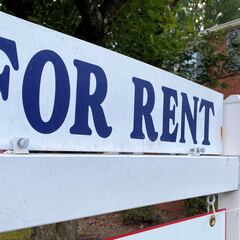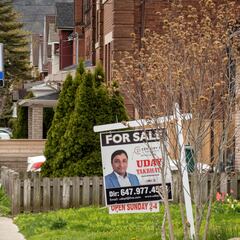The 10 US cities where rental prices have risen most in 2023
Across the country, rents are skyrocketing, leaving tenants with fewer options... The ten cities were prices have risen the most over the last year...


Across the country, renters are facing an unsustainable situation. In September, the average rental price rose half a percent, leading to a year-over-year increase in prices of 7.4 percent, according to the Bureau of Labor Statistics (BLS). Incomes are not increasing at the same rate, leaving many tenants to spend more on their rent.
Not all cities have seen rental prices surge at the same rates. According to the Bureau of Labor Statistics, over the last year, the cities that have seen the highest increases in rent are:
- Miami-Fort Lauderdale-West Palm Beach, Florida: 14.41 percent
- Riverside-San Bernardino-Ontario, California: 11.53 percent
- Phoenix-Mesa-Scottsdale, Arizona: 9.15 percent
- San Diego-Carlsbad, California: 8.83 percent
- Seattle-Tacoma-Bellevue, Washington: 8.4 percent
- Houston-The Woodlands-Sugar Land, Texas: 8.12 percent
- Denver-Aurora-Lakewood, Colorado: 7.88 percent
- Boston-Cambridge-Newton, Massachusetts/New Hampshire: 7.77 percent
- St. Louis, Missouri: 7.68 percent
- Detroit-Warren-Dearborn, Michigan: 7.42 percent
The list shows that the surge in rents is impacting communities across the country, with California being the only state with two metropolitan areas listed.
However, the Kansas City Fed has reported that the real estate web platform Zillow has tracked an increase in average rental price that is double that tracked by the BLS. This wide discrepancy shows that differences in methodologies can lead to very different stories describing the ongoing fluctuations in the rental market.
🏡 Both Zillow and the Bureau of Labor Statistics (BLS) measure rental prices.
— Kansas City Fed (@KansasCityFed) October 15, 2023
The Zillow series tends to be more volatile and leads the BLS series by around 6 to 10 months.
Read the Economic Bulletin: https://t.co/khVneJXl6d pic.twitter.com/t1h0wxMyor
Income inequality and the surge in rental prices
Currently, the one percent of the wealthiest households in the US own a more significant share of the country’s real estate than the bottom fifty percent of households. This trend did not start during the pandemic, but since 2020, the share owned by the bottom fifty percent of households, in terms of wealth, has fallen from twelve to 11.8 percent. The top one percent has also seen their share fall from 14.5 to 14.3 percent. Those in the fifty to ninetieth percent are the only group that has seen their share rise over the last three years (43.2 percent to 43.7 percent).
Only around sixty-five percent of households own their homes in the US and those that do tend to have higher incomes. A recent report released by the Federal Reserve found that eighty-eight percent of households with an income over $100,000 owned their homes, whereas only thirty-six percent of those with an annual income of $25,000 or less did in 2022.
Renters are much more powerless when there are major fluctuations in the housing market. The Fed’s report highlights this vulnerability, explaining that when landlords see the value of their property increase, as many have over the last year, they often choose to increase the price offered for renting their unit. “Sixty-four percent of renters said their rent had increased over the prior 12 months,” writes the Fed. In the same survey, only twenty-two percent of homeowners reported that their housing costs had risen. Not only have more renters seen their housing costs rise more than homeowners, but the amount renters pay for housing (32 percent) as a part of their income is nearly double the average for homeowners (17 percent).
Movement towards rural markets
When the Covid-19 pandemic broke out, the housing market saw dramatic changes take place rapidly. Since early 2020, the median selling price for a home in the US has grown from $322,000 to $416,000. The current median is down from the peak in late 2022 when the median reached $479,000.
Remote work allowed for greater flexibility in where workers could live, and many took the opportunity to leave significant cities, fleeing for options closer to nature. This mass movement of workers led rental prices in some areas with very cheap rental markets to see prices rise rapidly.
Related stories
Take the city of Bozeman, Montana, for instance. The city’s residents have protested the lack of action by the local government after the number of short-term rentals in the city doubled, a factor that led rental prices to increase forty percent since 2020. For locals, the transition towards short-term rentals, many of which are advertised on platforms like Airbnb, has severely limited the number of year-long leases, which has led prices in this market to climb rapidly. Short-term rentals are often geared towards tourists, but their growth in the market can make life for those who work in the hospitality, food service, and entertainment and recreation industry very difficult.
Back to the city
While many cities saw people leave during the pandemic, as workers were forced to return to the office, demand for rental units in cities rose quickly, leaving many to compete for a finite number of affordable units. The current rental vacancy rate in the US stands at 5.8 percent, the lowest level recorded in close to three decades. In New York and California, states with cities with very competitive rental markets, the rates are even lower than the national average, standing at 4.3 and 3.9 percent, respectively. This means that there is very little supply in a crowded market, which will push prices up, unless more units are placed on the market.

